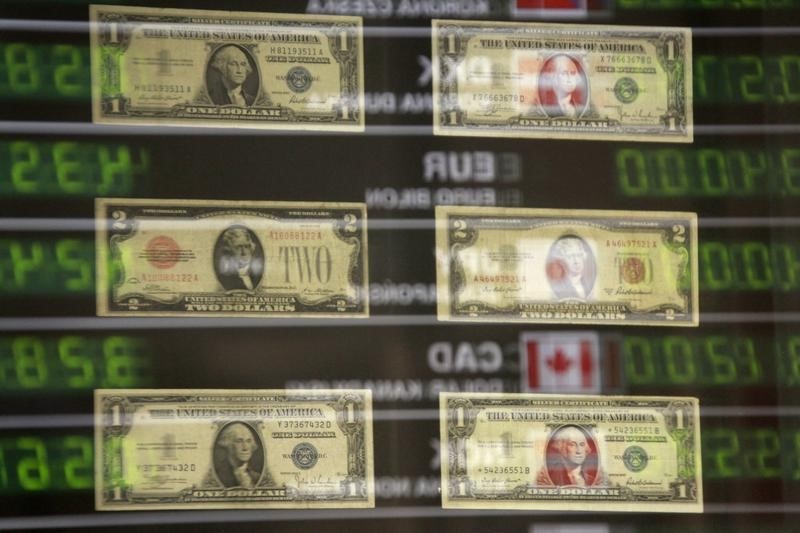* Local retail sales gives Aussie relief, RBA next in focus
* Commodity currencies hit as oil prices sink on China worries
* Dollar holds steady vs euro, yen as commodity currencies sink (Adds details, quotes)
By Ian Chua and Shinichi Saoshiro
SYDNEY/TOKYO, Aug 4 (Reuters) - The Canadian dollar languished at 11-year lows on Tuesday as a continuing selloff in oil prices thrust the loonie and other commodity currencies such as the Australian dollar into the spotlight, stealing the focus from a subdued U.S. dollar that held steady against the euro and yen.
In a bearish turn of events for currencies of oil exporters, crude prices slid a further 5 percent overnight to their lowest since January after weak factory activity in China deepened a commodity-wide rout. ID:nL3N10E1KE
This was also bad news for the Aussie, often used as a proxy for China trades. However, better-than-expected June Australian retail sales, released on Tuesday, gave it a bit of a breather. ECONAU
The Aussie last traded at $0.7296 AUD=D4 , inching away from a six-year trough of $0.7234 set last week.
The Australian dollar's near-term direction still hinged on the outcome of the Reserve Bank of Australia's policy meeting at 0430 GMT. ECONAU
While the RBA is considered almost certain to leave the cash rate unchanged at a record low 2.0 percent, it could try to talk down the currency.
The central bank has consistently said the exchange rate was still high, particularly as commodity prices such as iron ore have fallen even more, although RBA Governor Glenn Stevens recently declined to be drawn on whether the currency had fallen enough.
"RBA policymakers have made clear they can ease policy further if data were to deteriorate again and, with commodity prices lower and short AUD positioning not yet stretched, even subtle shifts in a dovish direction would likely add to pressure on the AUD," analysts at BNP Paribas (PARIS:BNPP) wrote in a report.
"We expect AUDUSD to trade down to test 0.70 this year."
The Canadian dollar last traded at C$1.3170 per USD CAD=D4 , after a low of C$1.3176 - a level not seen since August 2004.
"The longer that crude takes to recover, the greater the risk to energy capex plans for 2016 which in turn feeds into the Bank of Canada's projections and lowers the hurdle for further easing down the line," said Elsa Lignos, senior currency strategist at RBC Capital Markets.
"Next resistance targets for USD/CAD are 1.3246 and 1.3383 though it will take ongoing crude weakness to maintain the USD/CAD rally."
The Russian rouble reached a five-month low around 63.618 per USD RUBUTSTN=MCX .
In contrast, the G3 currencies marked time ahead of key U.S. jobs data due later in the week. The dollar, which was hit on Friday by soft wage growth data, was steadier at 124.07 yen JPY= , while the euro dipped 0.1 percent to $1.0943 EUR= .
Dollar bulls are now counting on non-farm payrolls on Friday to strengthen the chances of a September hike in interest rates.
"The market is not just focused on U.S. employment, but some continue to eye wages and inflation as well," said Masashi Murata, senior currency strategist at Brown Brothers Harriman in Tokyo.
"I don't see the decline in commodities impacting the Fed's rates decision, but those who do not share such a view see lower commodities as a dollar-bearish factor," he said.
Depending on U.S. indicators released before Friday's payrolls, "the dollar could experience some volatility," Murata said.
The New Zealand dollar dipped to $0.6566 NZD=D4 , holding above a six-year low of $0.6498 plumbed last month. (Editing by Richard Pullin and Richard Borsuk)
